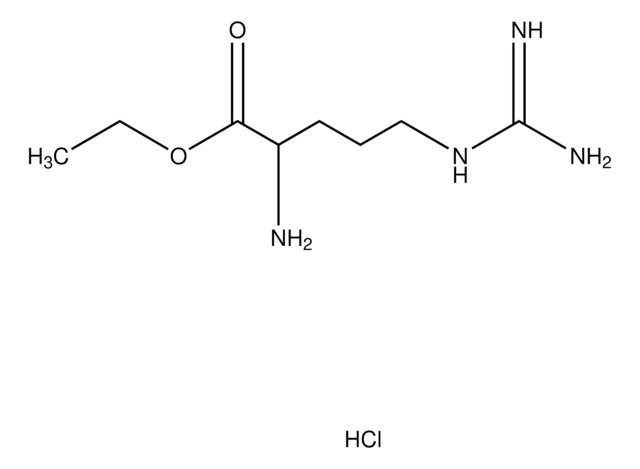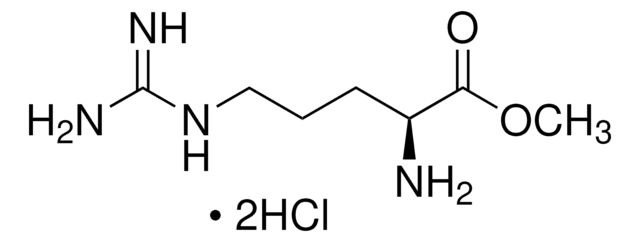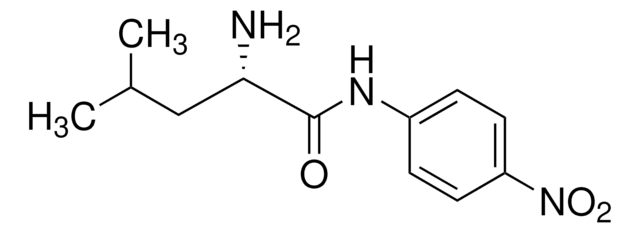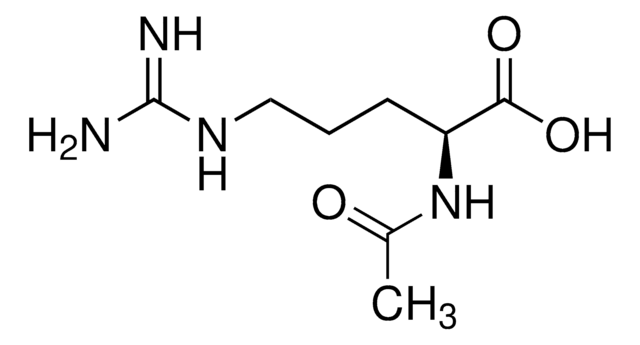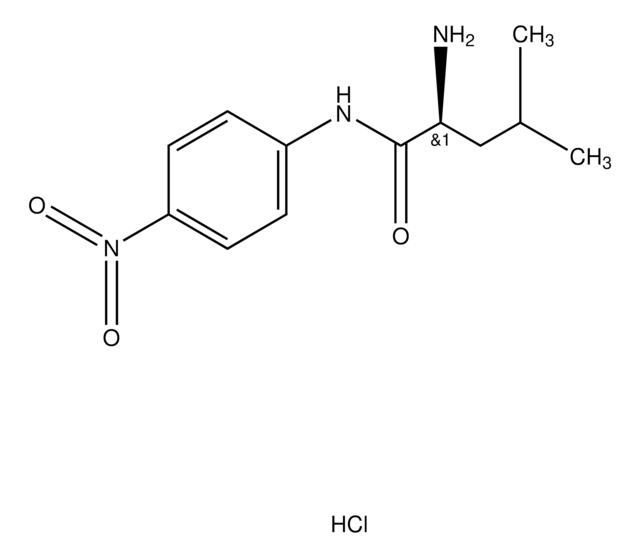A3913
L-Argininamide dihydrochloride
≥98%, suitable for ligand binding assays
About This Item
Productos recomendados
Nombre del producto
L-Argininamide dihydrochloride,
assay
≥98%
form
powder
technique(s)
ligand binding assay: suitable
color
white to off-white
storage temp.
−20°C
SMILES string
Cl.N[C@@H](CCCNC(N)=N)C(N)=O
InChI
1S/C6H15N5O.ClH/c7-4(5(8)12)2-1-3-11-6(9)10;/h4H,1-3,7H2,(H2,8,12)(H4,9,10,11);1H/t4-;/m0./s1
InChI key
BPQLYFCEVVKLLX-WCCKRBBISA-N
Application
Biochem/physiol Actions
signalword
Danger
hcodes
Hazard Classifications
Acute Tox. 4 Oral - STOT SE 1
target_organs
Eyes
Storage Class
6.1C - Combustible acute toxic Cat.3 / toxic compounds or compounds which causing chronic effects
wgk_germany
WGK 2
flash_point_f
Not applicable
flash_point_c
Not applicable
ppe
Eyeshields, Faceshields, Gloves, type P2 (EN 143) respirator cartridges
Elija entre una de las versiones más recientes:
¿Ya tiene este producto?
Encuentre la documentación para los productos que ha comprado recientemente en la Biblioteca de documentos.
Nuestro equipo de científicos tiene experiencia en todas las áreas de investigación: Ciencias de la vida, Ciencia de los materiales, Síntesis química, Cromatografía, Analítica y muchas otras.
Póngase en contacto con el Servicio técnico